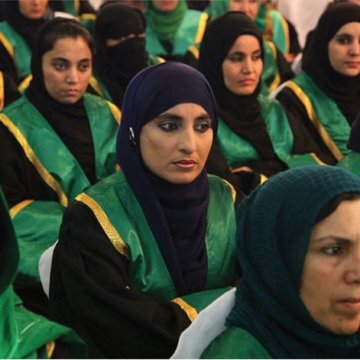- About
- Topics
- Story
- In-Depth
- Picks
- Opinion
- News
- Donate
- Signup for our newsletterOur Editors' Best Picks.Send
Read, Debate: Engage.
| located: | Afghanistan |
|---|---|
| editor: | Shadi Khan Saif |
Years of campaigns for women’s rights in Afghanistan – based on strategies orchestrated by lavishly paid advisors at the local and foreign aid agencies and the west-backed Kabul government – seem utterly failed. The graph of violence, rape and harassment stays on an upward trajectory.
Lack of local wisdom, or a local solution for this global issue in Afghanistan has resulted in a vicious circle in which things are moving round and round, and ultimately coming back to where it all began. The latest findings of the country’s own Afghanistan Independent Human Rights Commission (AIHRC), say that despite the efforts of the international community and the Afghan government, the level of violence against women in Afghanistan remains high with 3,778 cases of violence recorded throughout the year. A total of 231 cases of murder, 1,003 cases of beating and 38 cases of rape were recorded this year so far.
The report was released on the occasion of International Day for the Elimination of Violence against Women.
Last week, the country’s capital, Kabul, witnessed a gruesome incident of suicide involving a young and bright Kabul University student. Zohra Khawari, a female student of the faculty of Veterinary Medicine, committed suicide on Saturday due to reported harassment and persecution. The AIHRC chairperson Seema Samar has called for proper investigations into this incident to determine if it was a case of violence or sexual abuse.
These highly disappointing and heart breaking figures are just the tip of the iceberg of a state of affairs related to women in the conservative Afghan society. By the country’s own standards, it reflects a negative development on top of a multi-million dollar Promote – Gender Equity in National Priority Program by the international donors among many other such projects.
Many of these endeavours are designed for a relatively small number of women and girls living in a handful of urban centres, such as the capital Kabul, and Herat, Mazar-e-Sharif, Jalalabad and Kandahar cities, while an overwhelming majority of Afghan women live in rural areas.
Therefore indigenous solutions for women empowerment and emancipation, of course with an acceptable level of foreign expertise, are more likely to bring the graph of violence down, rather than ideas conceived in the air with the sole purpose of keeping the donations mill running, without a care about the much-needed positive change in the lives of Afghan women.
